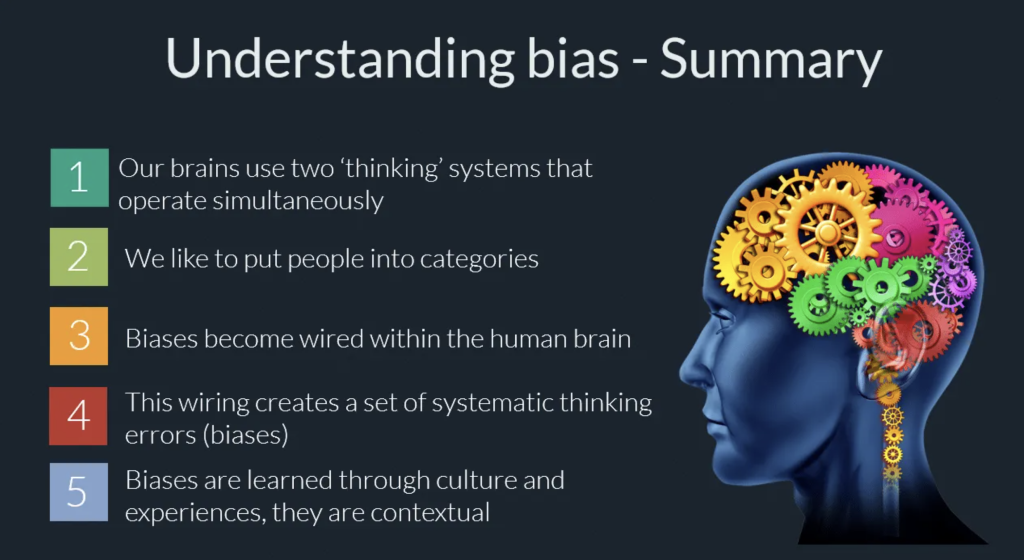Central Rivers AEA strives to cultivate a workplace in which everyone feels welcomed and empowered to bring their whole selves to work. Continuing work done by the Equity Committee, in partnership with the Leadership Academy, we will invest in employee development initiatives to foster a positive and inclusive workplace culture. “Courageous Conversations” will be featured monthly in The Channel, offering staff opportunities for self-guided learning.
November’s Courageous Conversations: Understanding Unconscious Bias
The exploration of bias is not about villainizing one group over another or making anyone feel guilt, shame or fear. It’s about making progress on our biases and understanding how they limit possibilities for us or others.
Common Definition: Bias is a preference for or against a thing, person or group compared with another. Biases may be held by an individual, group or an institution.
Example of Conscious Bias: Extroverts make the best leaders.
| Conscious Bias | Unconscious Bias |
|---|---|
| Bias attitudes or beliefs you have that you are aware of. | Biased attitudes that exist outside of your awareness and control. |
| We know we are being biased, and doing it intentionally. | We aren’t aware that we hold biased attitudes or beliefs toward certain things. |
| Can be easily observed. | Can’t be easily observed. |
Example of Unconscious Bias: When hiring, you gravitate towards an applicant because they share the same alma mater.
Helpful learning: The Neuroscience of Unconscious Bias
Recognizing bias
“Everybody is biased. The truth is, we all harbor unconscious assumptions that can get in the way of our good intentions and keep us from building authentic relationships with people different from ourselves. By becoming more self-aware, we can control knee-jerk reactions, conquer fears of the unknown, and prevail over closed mindedness. In the end, our central message is that you are not the problem – but you can be the solution.” -Dr. Tiffany Jana
| Frame | Reframe |
|---|---|
| I am not biased. | Bias exists in everyone, including me. |
| I view things objectively. | I actively think about how bias is at play in the choices I make. |
Self-awareness is KEY!
Questions/steps to consider:
- PAUSE – Give yourself a moment to reflect.
- Ask yourself – Why did I choose to say that? Why did I think that? Why did the person react in that way?
- Ask yourself – What am I assuming? Are my assumptions based on fact or experiences, or on something less concrete?
- If the “why” is not clear, ask a trusted colleague. (Depending on your role, you might not be getting “real feedback.” Ask for it. By doing so, you’ll create an environment where it’s safe to give and receive feedback.)
Unconscious Bias training opportunity
Registration for the full-day Disrupting Bias learning session, offered by Gina Weekley and MaKenzie Hakeman, is now open and will be offered at each Central Rivers AEA office location. Interested in participating? Sign up using this Google form by January 28, 2025.

